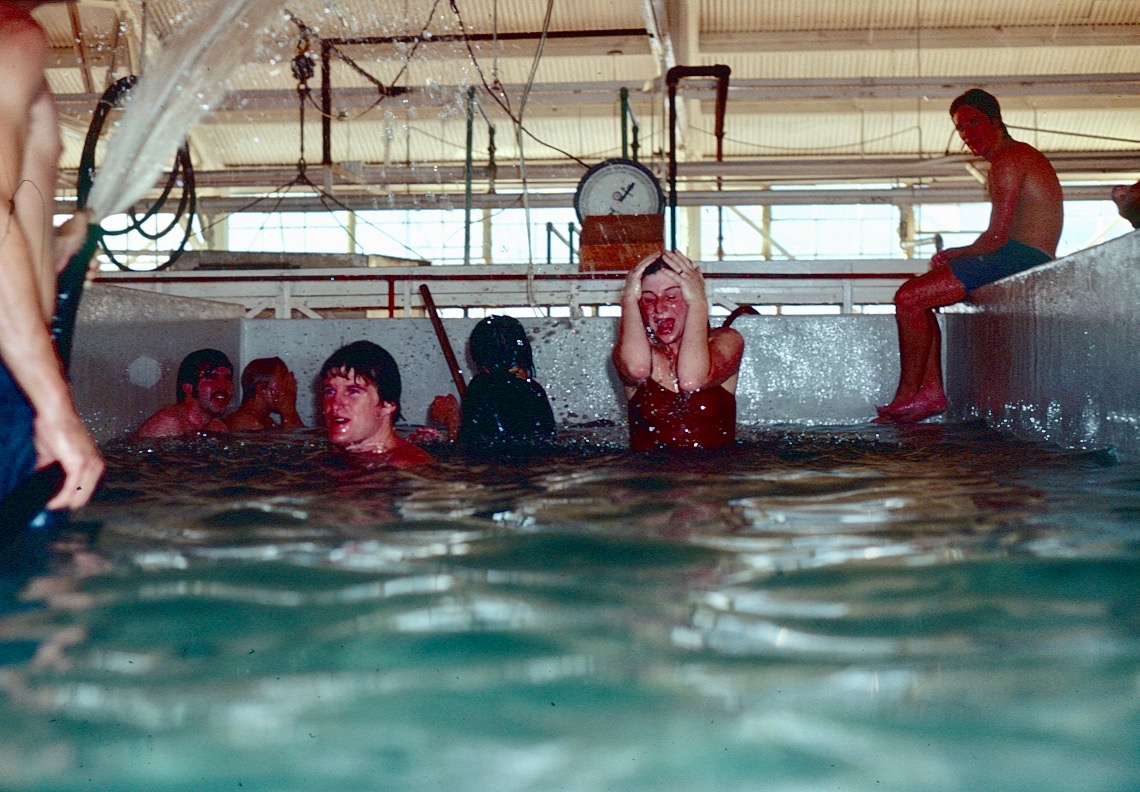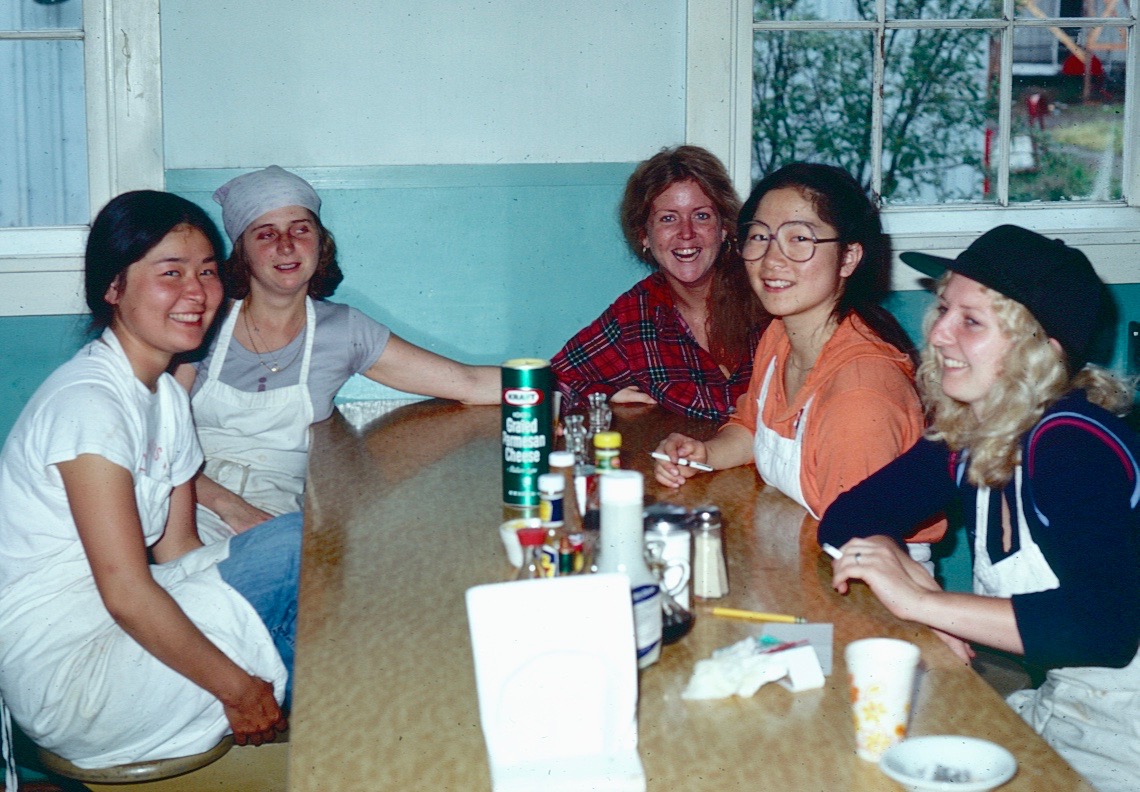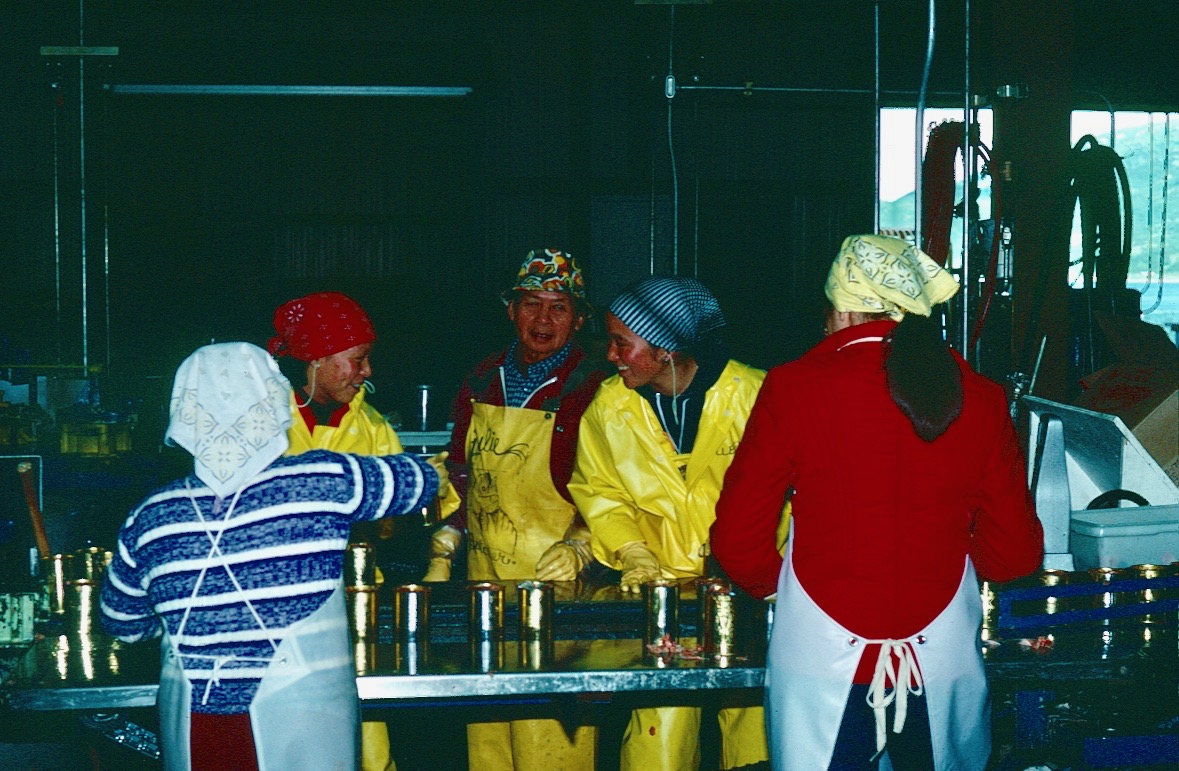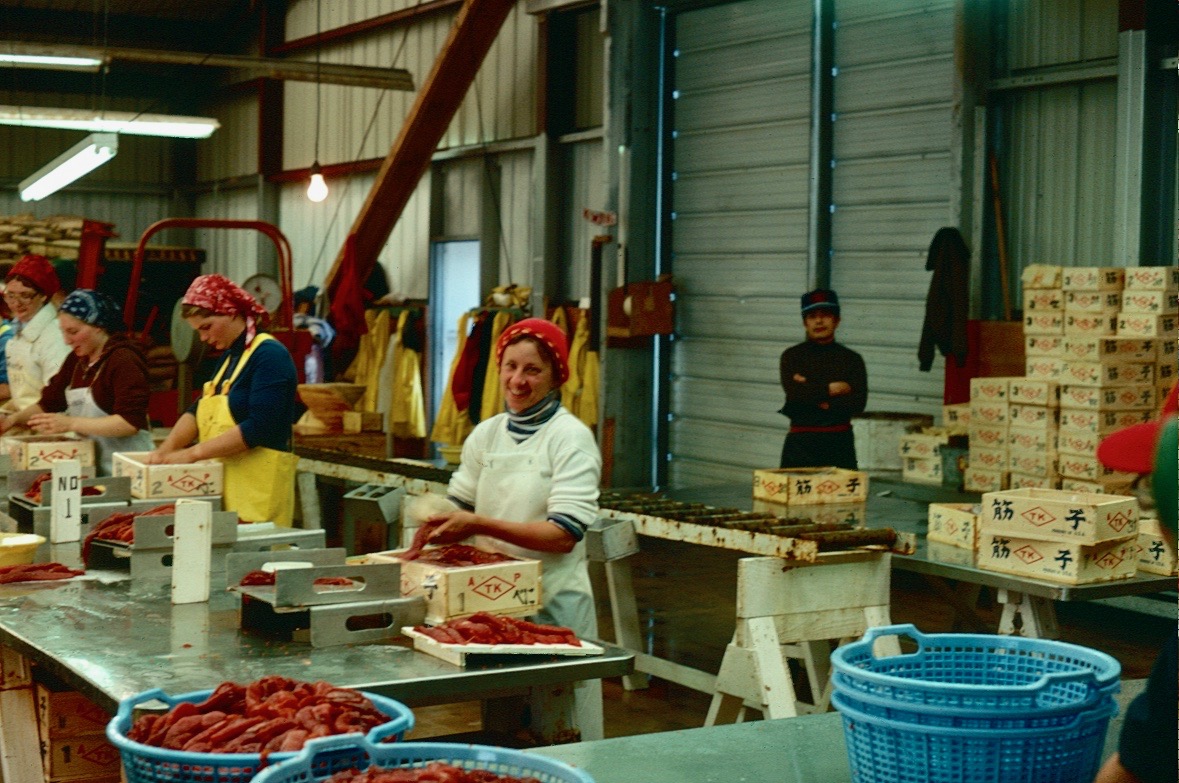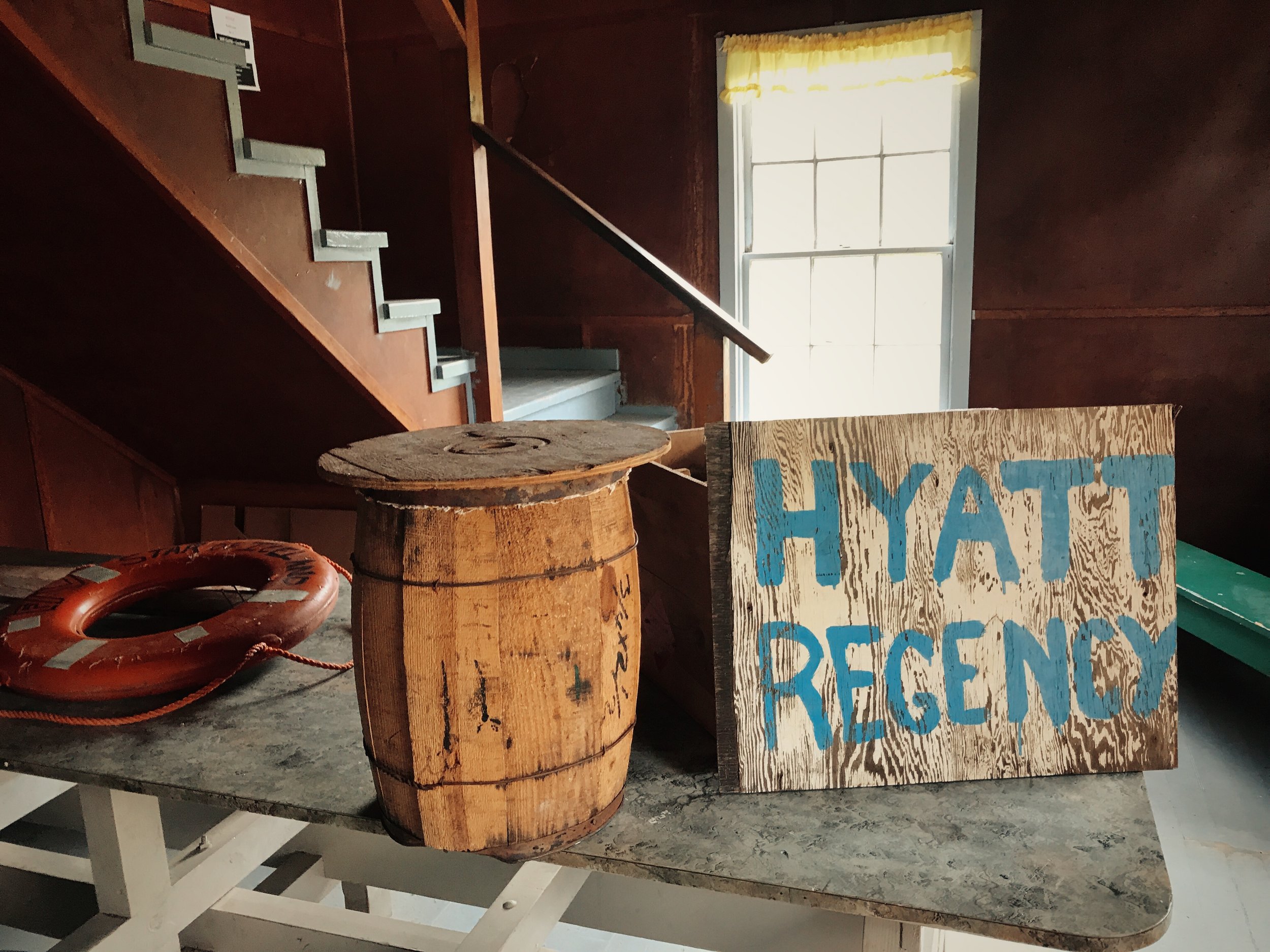
Hyatt Regency
Hyatt Regency sign, life ring and makeshift furniture in the NN Cannery Fisherman's Bunkhouse.
Courtesy of Trident Seafoods
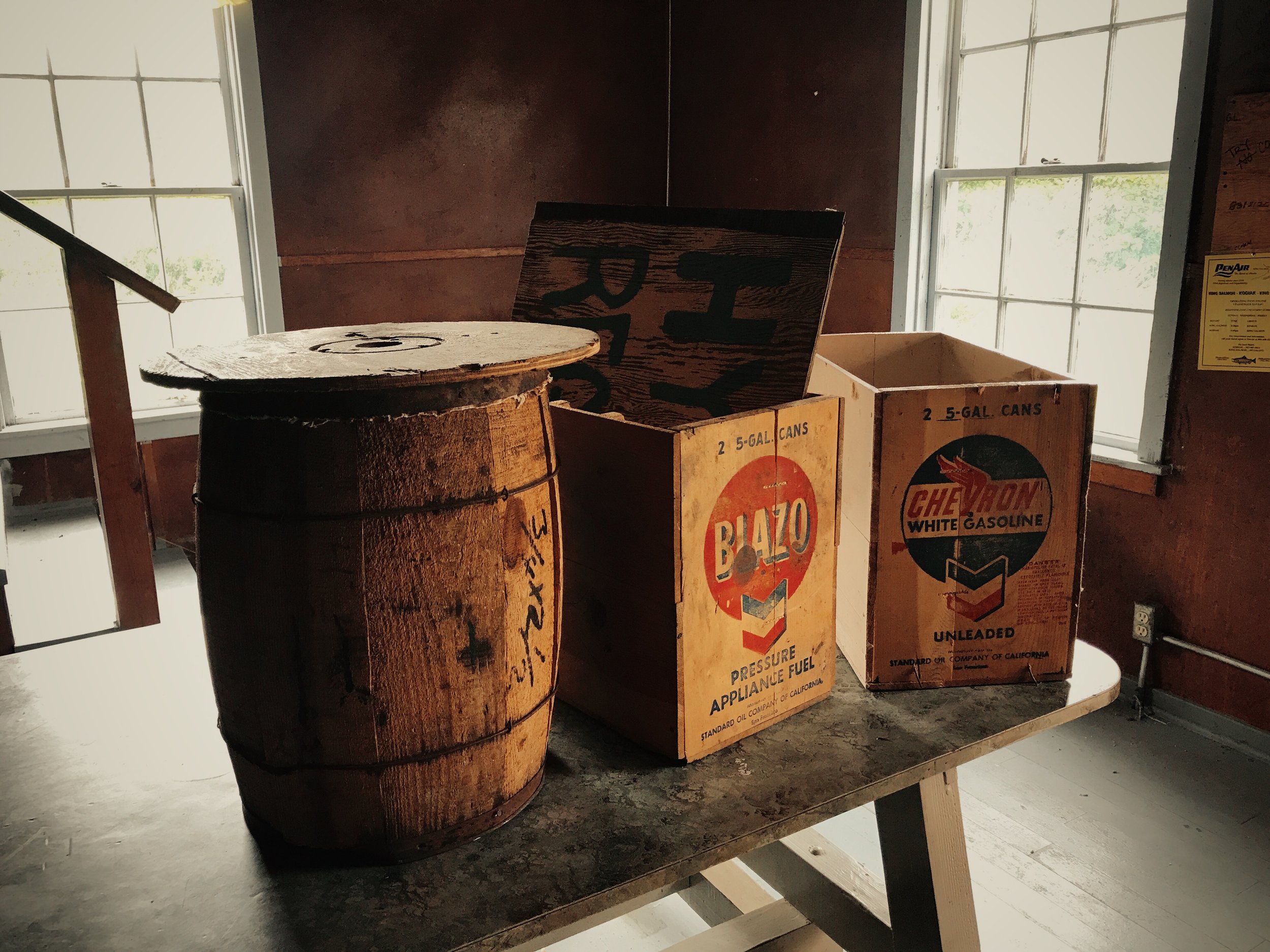
Makeshift Furniture
Night stand made with old barrel and wooden rope spool with gas boxes repurposed to serve as shelving in the NN Cannery Fisherman's Bunkhouse.
Courtesy of Trident Seafoods
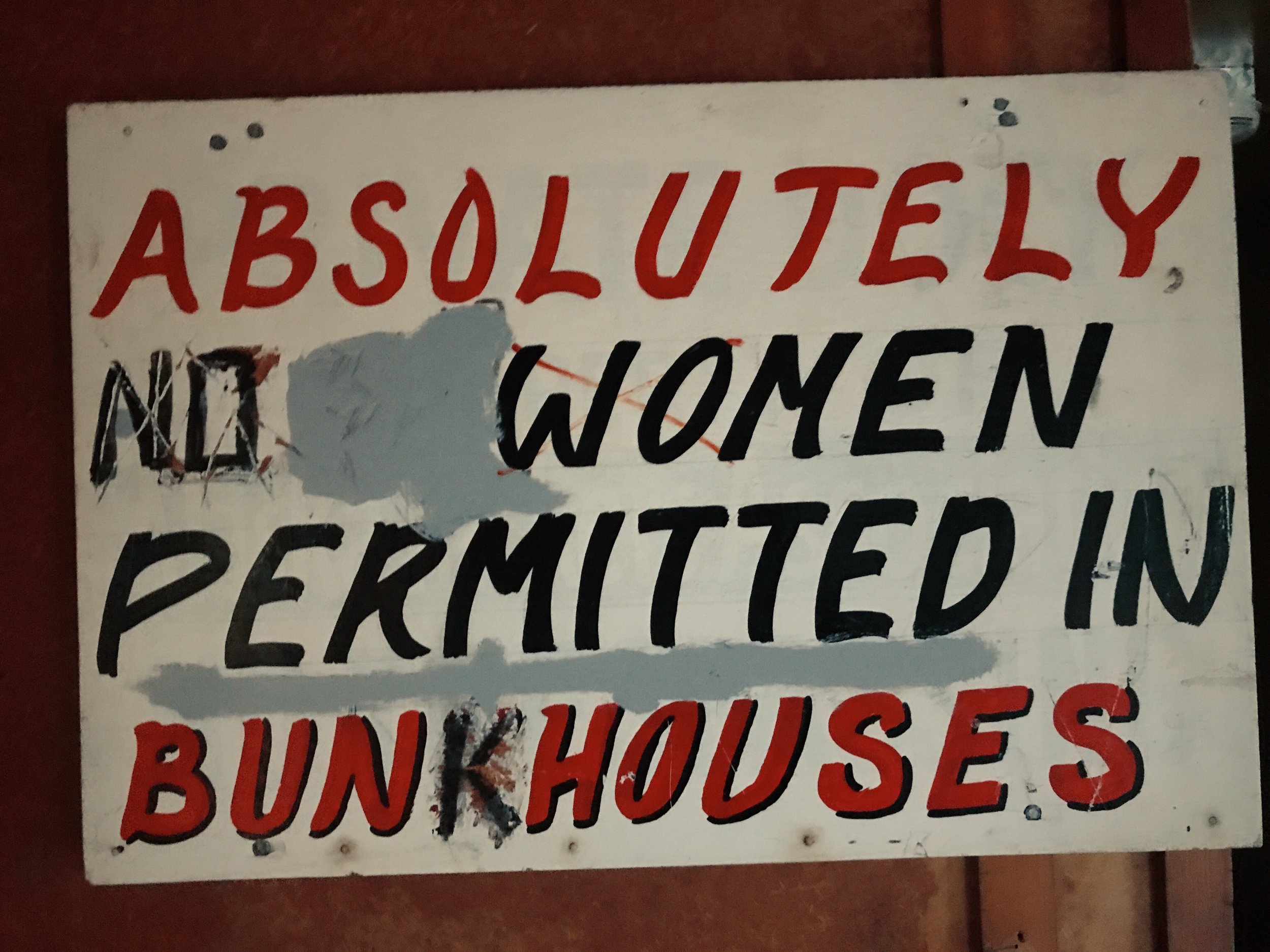
No Women Permitted
Sign posted in a bunkhouse that most recently housed commercial fisherman.
Courtesy of Trident Seafoods
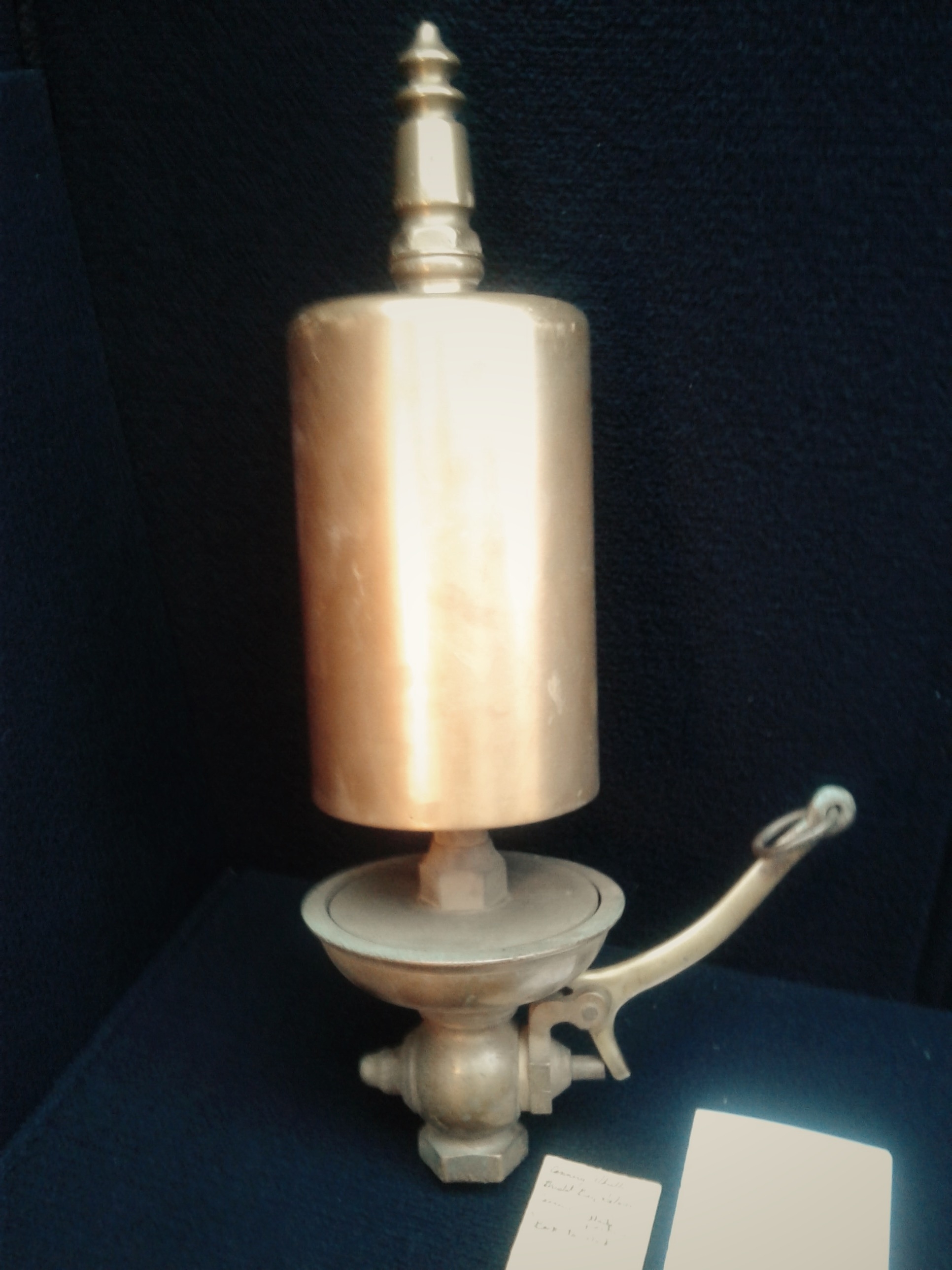
Alaska Packers “Back to Work Whistle"
In all Alaska canneries, a steam whistle blew to let cannery workers know when work commenced, when it ended, and when to pause for a welcomed “Mug Up” coffee break.
Courtesy of Rob Johnston
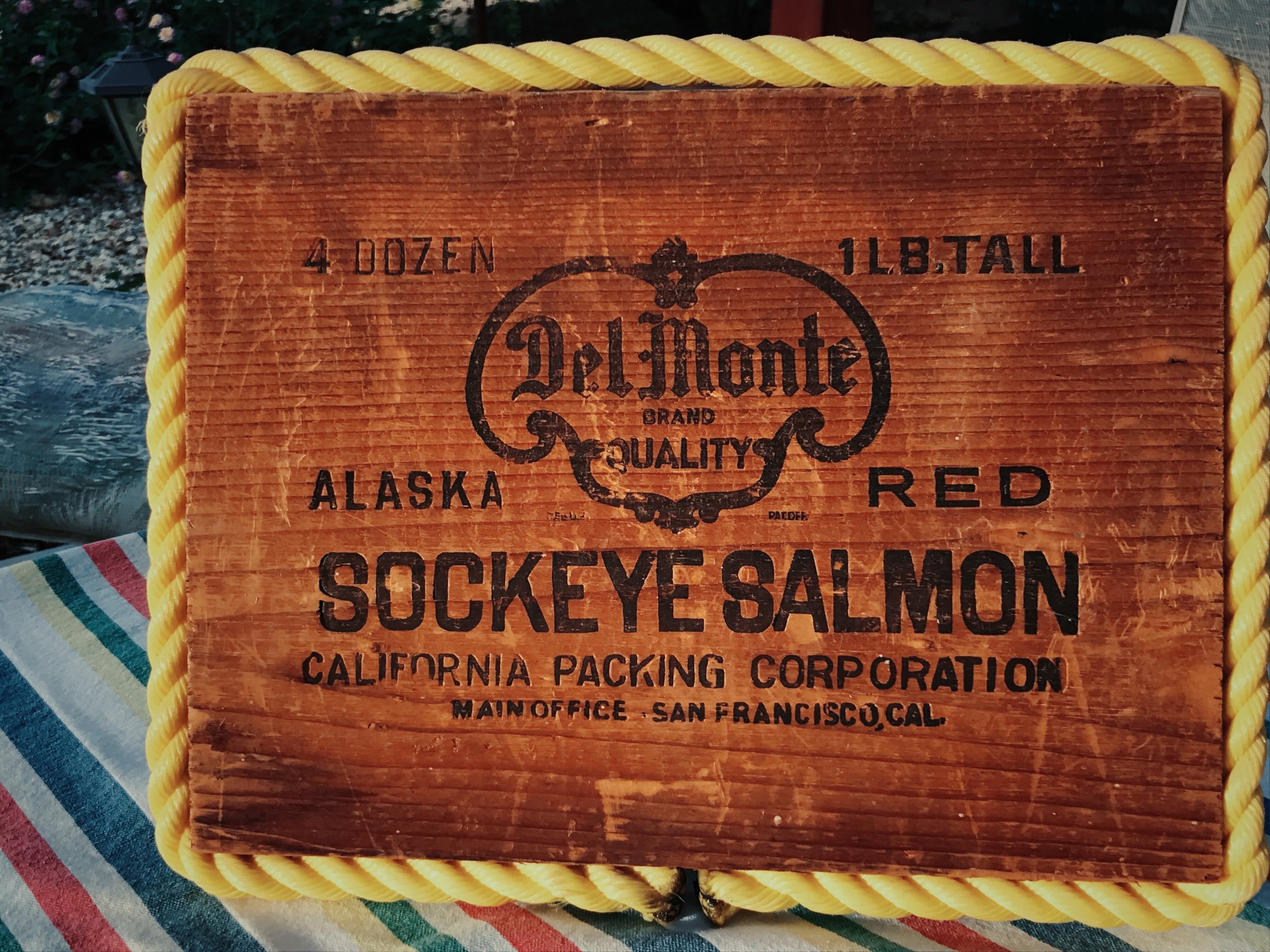
Salmon Box Top
In 1916, San-Francisco-based California Packing Company (CALPAC) acquired Alaska Packers Association and Alaska canned salmon was marketed and sold under the popular "Del Monte" and label.
Courtesy of Gary Johnson
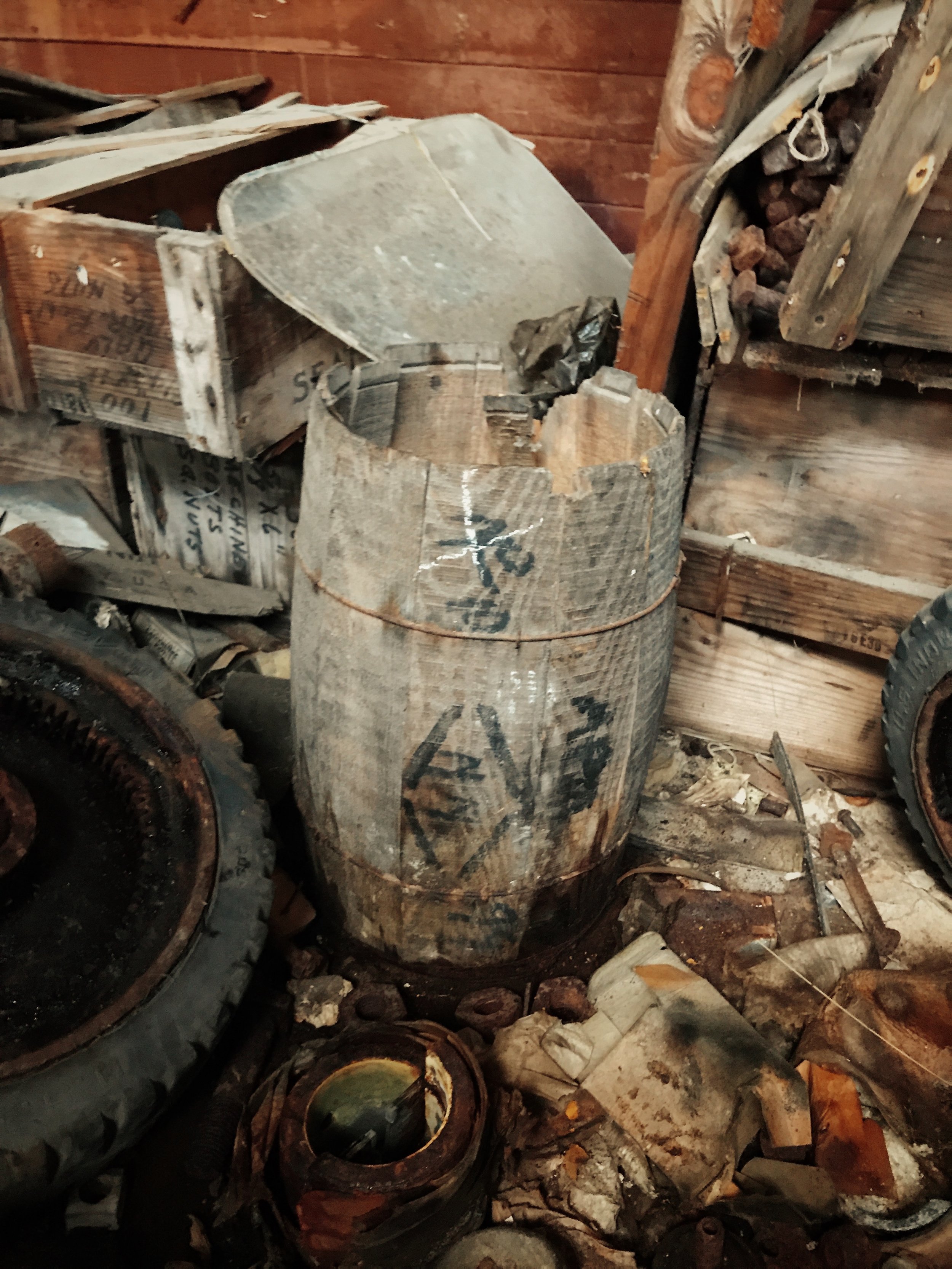
Wooden Barrel
A wooden barrel filled with bolts, likely transported from San Francisco to Bristol Bay on one of APA star ships, is stamped “APA 1899 <NN>. Near the top of the barrel is a Chinese character. The marking illustrates the Asian influence on the cannery work experience and directly represents the Chinese laborers at the NN Cannery at South Naknek.
Courtesy of Trident Seafoods
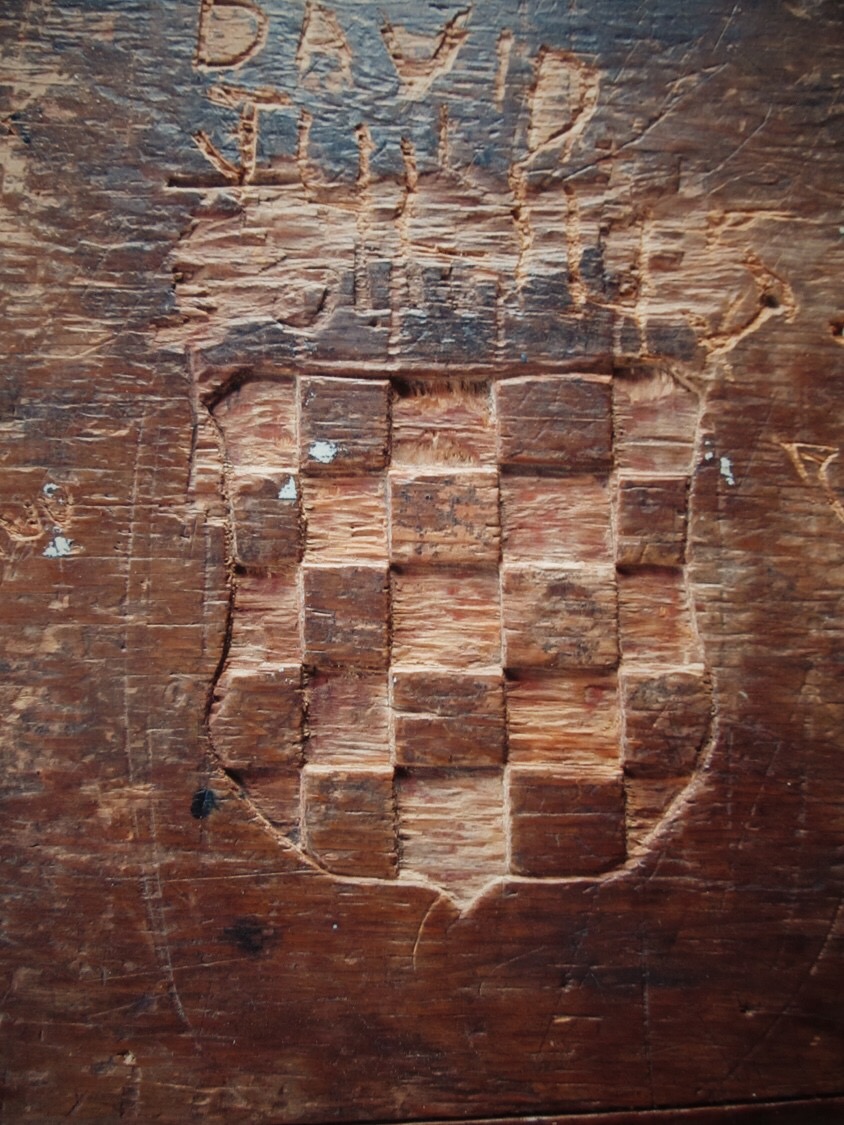
Croatian Flag Carving
A remnant of an anonymous fisherman, this depiction of the Croatian flag was carved into a table located in the fisherman’s bunkhouse. The graffiti not only reflects the NN cannery’s cosmopolitan social landscape, but speaks to international events, such as Croatian independence in 1991. Courtesy of Trident Seafoods
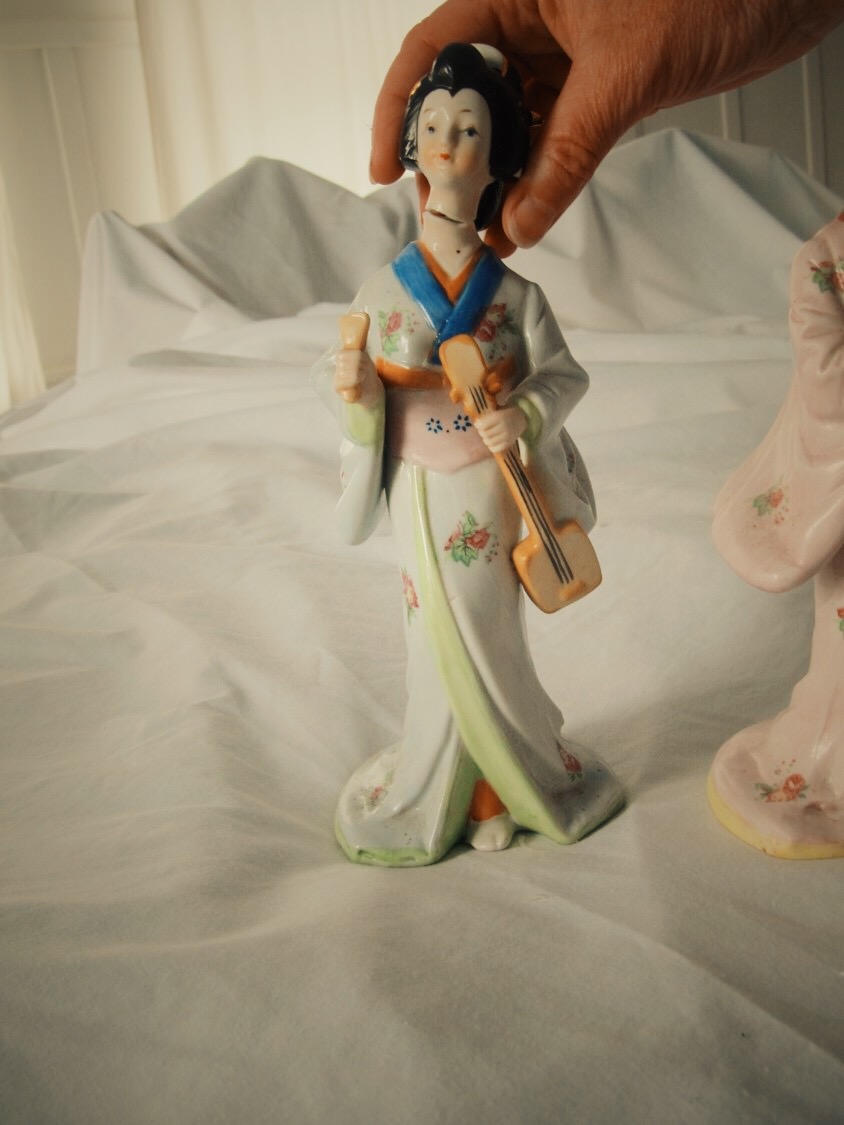
Japanese Figurine
Found in the Superintendent’s dwelling, known as the “White House,” this figurine was likely presented as a gift from the Japanese to the cannery superintendent, when meeting to discuss terms regarding the Egg House and other business.
Courtesy of Trident Seafoods
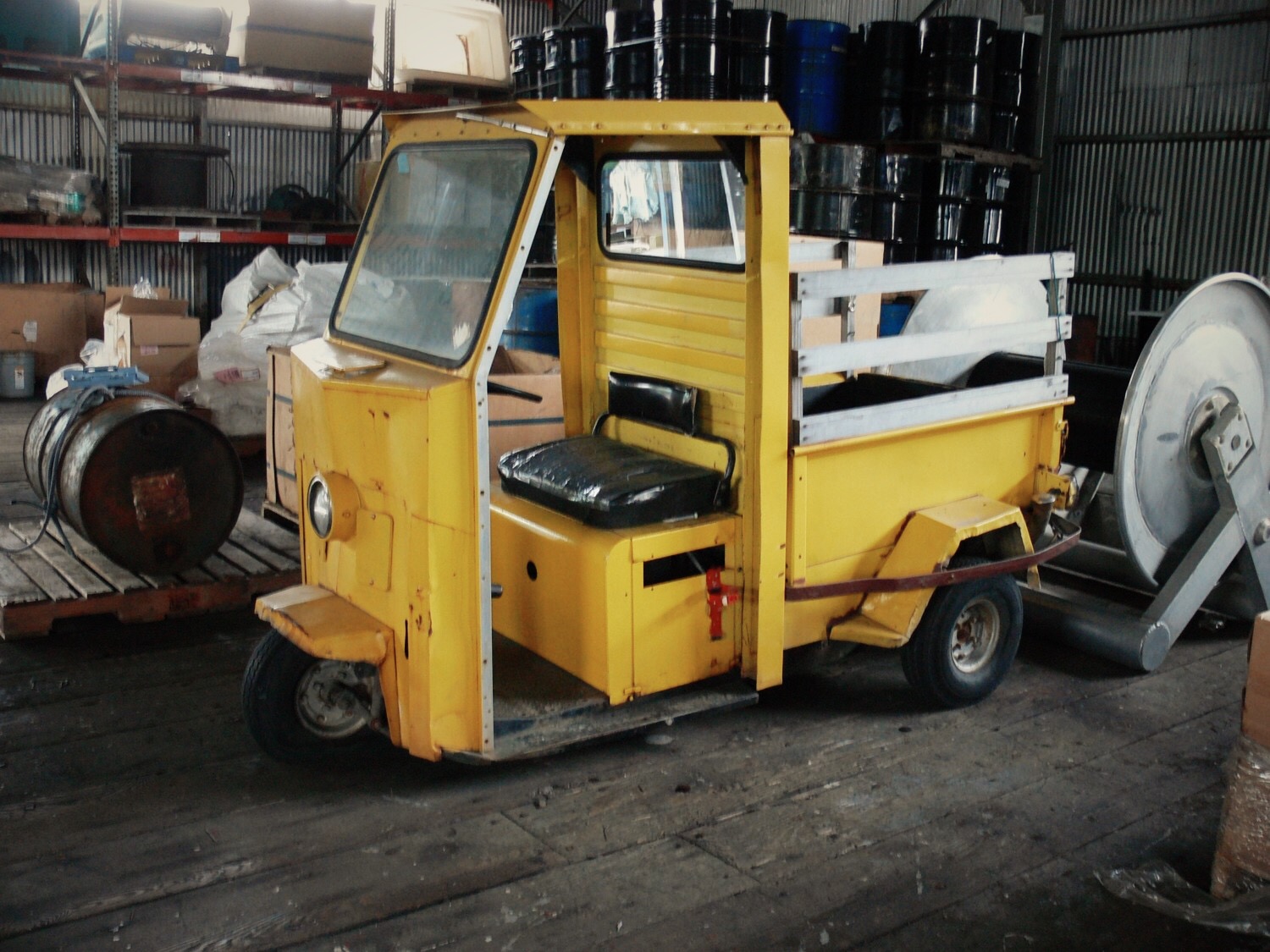
Mug Up Cart
Mess hall crews drove the yellow Cushman to various stations throughout the cannery’s processing areas to deliver fresh doughnuts, cookies, tea and coffee to cannery workers for Mug Up (a 15 minute coffee break).
Courtesy of Trident Seafoods
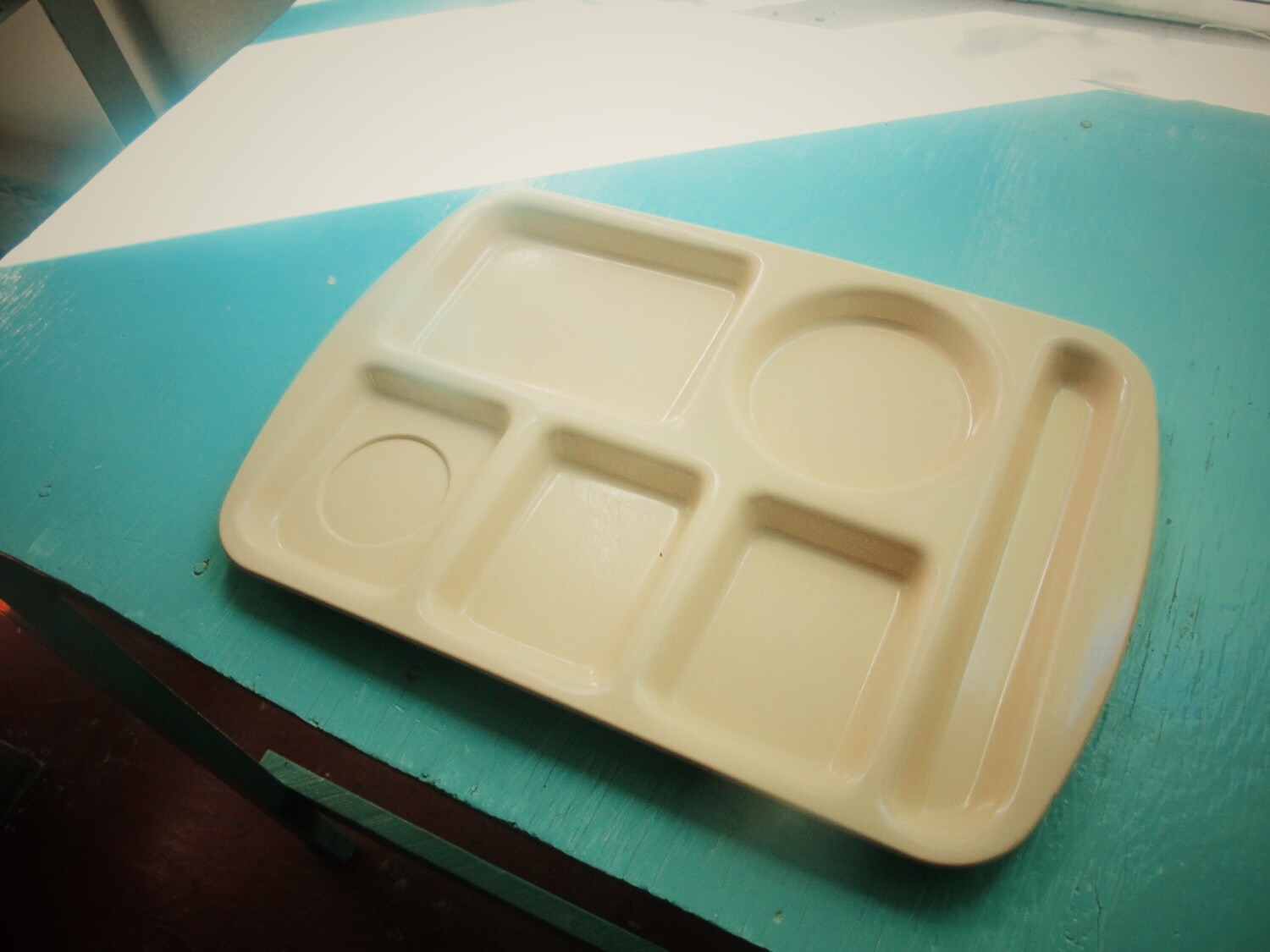
Mess Hall Tray
The average cannery work ate up to four meals per day on the mess hall tray. During the season’s peak, food served as both subsistence and enticement that spurred on the cannery worker’s daily routine.
Courtesy of Trident Seafoods
